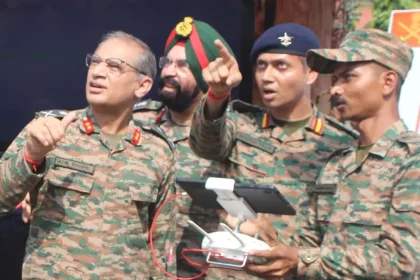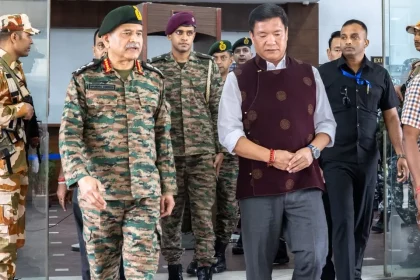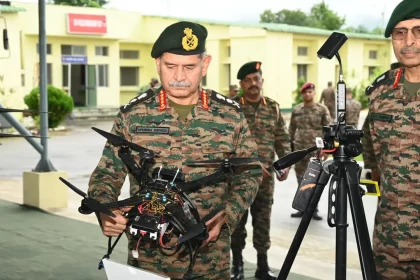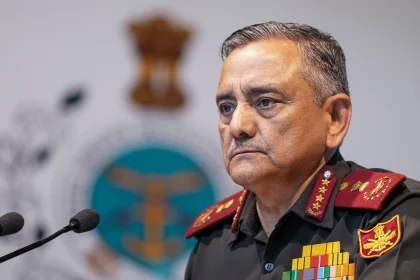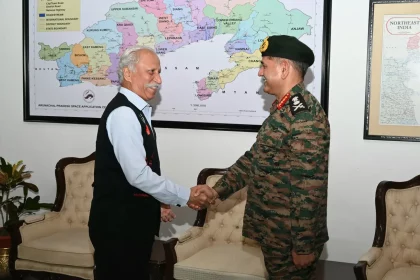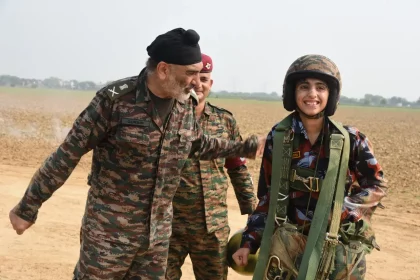Major General Sunil Rampal Reviews Indigenous Tech at Ambala Cantt
The Kharga Corps, known for its operational readiness, has been at the forefront of adopting such technologies.
Army Chief General Upendra Dwivedi, Top Brass Join CM Pema Khandu to Boost Arunachal Development
The meeting also addressed strategic issues, including land concerns, the recruitment of local youths into the Army.
General Upendra Dwivedi Visits Drone Excellence Centre at Likabali Military Station
The integration of drones is seen as a transformative step, enabling enhanced surveillance, reconnaissance, logistics, and even medical evacuation missions.
Why Operation Sindoor Was Planned at 1 AM: CDS Gen Anil Chauhan Explains
India’s midnight precision strikes on May 7 avoided civilian casualties, marked a new era in multi-domain warfare.
General Upendra Dwivedi Meets Arunachal Pradesh Governor Lt Gen KT Parnaik During Spear Corps Visit
The COAS further assured the Army’s commitment to strengthening preparedness along the eastern frontiers.
NCC Cadets Undertake Para Jump at Army Airborne Training School Agra
The successful completion of the Para Jump not only awards the cadets the prestigious Para-Wings to wear on their uniforms.

